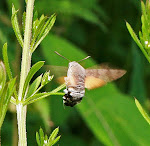Endemic to the upper regions of Sierra Nevada and the Sierra de Alfacar in southern Spain, Pinguicula nevadensis occurs in small groups on gently sloping damp turf and flushes from 2400 metres upwards with a limit at about the 3000 metre contour. It is often found near the margins of some of the higher ex-glacial tarns as well as in the ‘borreguiles’. These are fragile, boggy seepages or rivulets and show up as bright green patches against the drab stony terrain; they tend to develop as the ground thaws out at the beginning of summer.
.jpg)
P. nevadensis is a small plant with a few waxy-green, glandular-surfaced leaves. Like other European members of the genus it is carnivorous and gains nutrients by absorption of organic material from any small flies and insects trapped on its sticky leaf surfaces. There are usually 1-3 flowering stems, the flowers borne singly on erect pedicels. Flowering is from early July to August depending on the season. It was first discovered by Edmund Boissier when travelling to the upper regions of the Sierra Nevada in 1837.
.jpg)
.jpg)
Below: The Laguna d’Aguas Verdes, Sierra Nevada, a high alpine tarn at c.3000 metres whose margins provide a habitat for the plant.
.jpg)
.jpg)






No comments:
Post a Comment